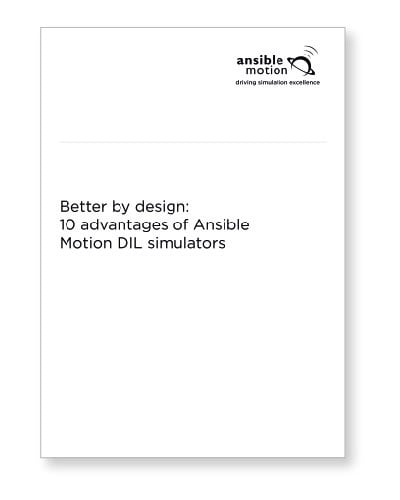 Driving simulators are in demand now more than ever, providing repeatable laboratory-like environments to test and validate the rising number of User Interfaces (UI) and Advanced Driver Assistance Systems (ADAS) technologies.
Driving simulators are in demand now more than ever, providing repeatable laboratory-like environments to test and validate the rising number of User Interfaces (UI) and Advanced Driver Assistance Systems (ADAS) technologies.
The increasing use of UI and ADAS presents an alluring challenge for testing and verification. Perhaps more so than any other element of a vehicle, this is where interactions between a machine and a human driver occur. And it means human beings are a crucial aspect of the test and verification process for vehicles with these capabilities.

According to some industry specialists, the explosion in growth of such systems is now fuelling driving simulator developments. With advances in simulator technology moving on in leaps and bounds over the last decade, more automotive engineering departments are relying on simulation, which is fuelling the increased prominence of driver in the loop (DIL) technology.
DIL testing ensures human interaction happens earlier and more often in a vehicle project’s timescale and creates time for more thorough tuning and testing as each system is developed. Most importantly, this means that potential issues can be identified early on, when they are less costly to address, at a time when physical prototypes might not be available.
Even when prototype vehicles are available, they can often be in short supply, and potentially appropriated to other areas for other tests. DIL simulation can and does help to manage the workload for all departments as new systems are introduced.
What’s becoming the new game-changer is that DIL testing is no longer the exclusive preserve of high dynamics and OEM engineers. There is now the growing trend of more departments needing access, with seating, HMI, drivetrain, safety and software validation just some examples of where engineers are relying on results gleaned from the virtual world. Having achieved the core fidelity needed to provide convincing human interaction experience and valid data, driving simulators have already come of age, backed by a long-life expectancy.
Due to such megatrends in autonomy, electrification, connectivity and driver assistance, portable driving simulators for vehicle development applications are providing the ideal solution to those who are restricted by space or cost, thanks to their compact footprint and sophisticated computational architecture. Compact simulators are now offering opportunities across multiple departments of OEMs to successfully solve market challenges in a more immersive environment.



